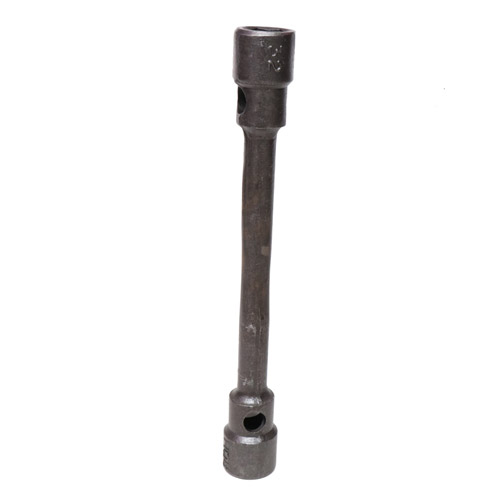

Wheel Spanner

After the billets are cut to size, a machine then feeds each billet into an induction heater in order to heat the metal and allow it to be forged into a certain shape. ... Once the billets are heated to a certain temperature, the dies then forge the heated metal into the shape of a wrench.
The advantage of forging is that it improves the strength of the metal by aligning and stretching the grain structure. A forged part will normally be stronger than a casting or a machined piece. A lug wrench is the name for a type of socket wrench used to loosen and tighten lug nuts on automobile wheels
When re-fitting a wheel, the nuts (or bolts) should be tightened in a criss-cross pattern (to even out the forces) and initially should only be tightened "finger tight" on all nuts. In this context "finger tight" is tight enough to reach the point where free play is taken up and proper tightening is about to begin, say, the tightening force using the wheel spanner This should be repeated twice, to ensure the wheel is properly centered and restrained by all nuts (as often the first nut that is tightened will be slightly loose after completing the set for the first time), then the wheel should be lowered to the ground and the criss-cross tightening pattern repeated to modest torque (say few fingers force on the wheel spanner, and then finally repeated to full hand force.




